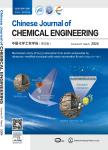Amination of biochar surface from watermelon peel for toxic chromium removal enhancement
Amination of biochar surface from watermelon peel for toxic chromium removal enhancement作者机构:Department of Chemical EngineeringFaculty of EngineeringCairo UniversityGizaEgypt Renewable Energy ProgramZewail City of Science and TechnologyEgypt Environmental DivisionNational Institute of Oceanography and FisheriesKayet BeyEl-AnfoushyAlexandriaEgypt
出 版 物:《Chinese Journal of Chemical Engineering》 (中国化学工程学报(英文版))
年 卷 期:2021年第34卷第8期
页 面:199-222页
核心收录:
学科分类:0710[理学-生物学] 083002[工学-环境工程] 0830[工学-环境科学与工程(可授工学、理学、农学学位)] 081702[工学-化学工艺] 0817[工学-化学工程与技术] 08[工学] 0703[理学-化学]
主 题:Waste treatment Powder technology Citrullus lanatus Hexavalent chromium Biochar amination Adsorption
摘 要:Watermelon peel residues were used to produce a new biochar by dehydration *** new biochar has undergone two methods of chemical modification and the effect of this chemical modification on its ability to adsorb Cr(VI)ions from aqueous solution has been *** biochars,Melon-B,Melon-BO-NH_(2) and Melon-BO-TETA,were made from watermelon peel via dehydration with 50%sulfuric acid to give Melon-B followed by oxidation with ozone and amination using ammonium hydroxide to give Melon-BO-NH_(2) or Triethylenetetramine(TETA)to give *** prepared biochars were characterized by BET,BJH,SEM,FT-IR,TGA,DSC and EDAX *** highest removal percentage of Cr(VI)ions was 69%for Melon-B,98%for Melon-BO-NH_(2) and 99%for Melon-BO-TETA biochars of 100 mg·L^(−1) Cr(VI)ions initial concentration and 1.0 g·L^(−1) adsorbents *** unmodified biochar(Melon-B)and modified biochars(Melon-BO-NH_(2) and Melon-BO-TETA)had maximum adsorption capacities(Q_(m))of 72.46,123.46,and 333.33 mg·g^(−1),*** amination of biochar reduced the pore size of modified biochar,whereas the surface area was *** obtained data of isotherm models were tested using different error function *** Freundlich,Tempkin and Langmuir isotherm models were best fitted to the experimental data of Melon-B,Melon-BO-NH_(2) and Melon-BO-TETA,*** adsorption rate was primarily controlled by pseudo-second–order rate ***,the functional groups interactions are important for adsorption mechanisms and expected to control the adsorption *** adsorption for the Melon-B,Melon-BO-NH_(2) and Melon-BO-TETA could be explained for acid–base interaction and hydrogen bonding interaction.



